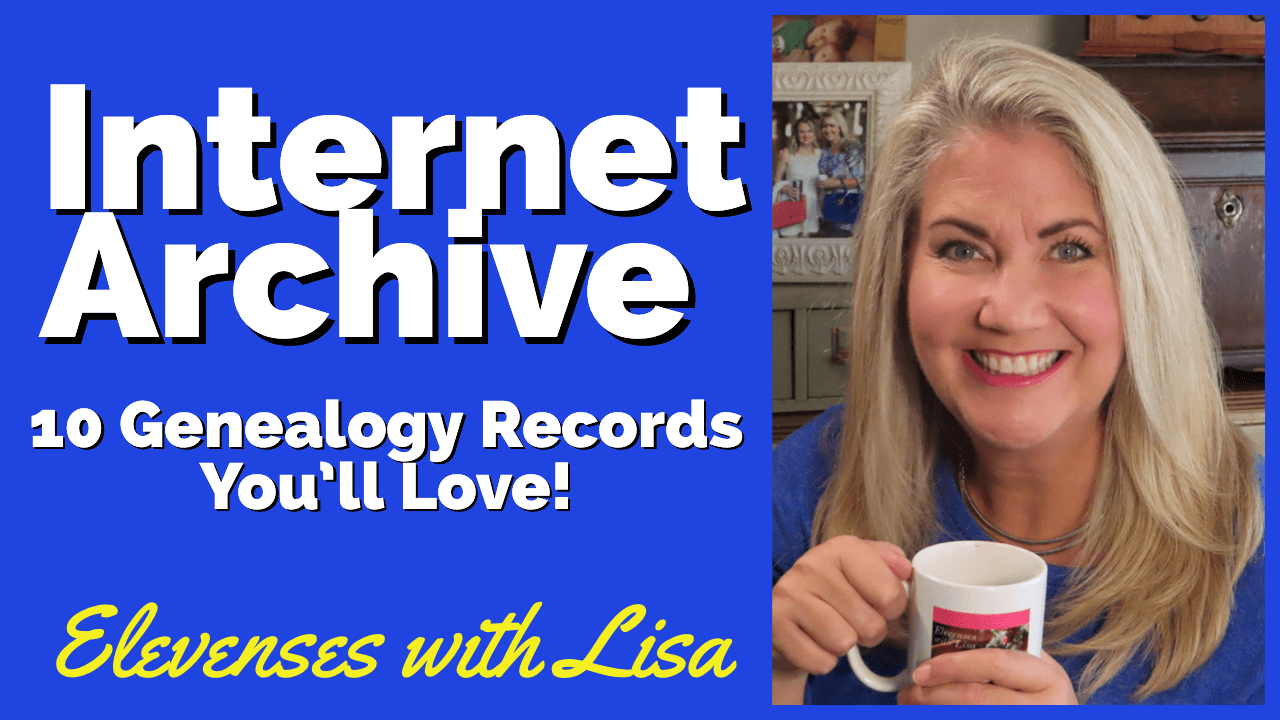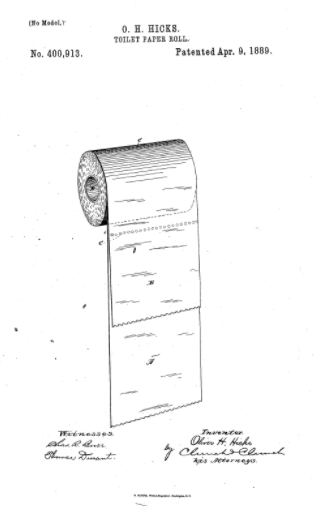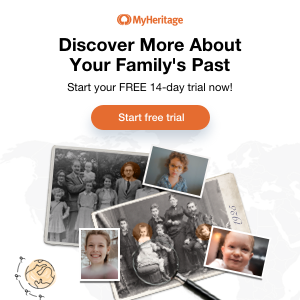Ultimate Guide to 1890 Census and Substitute Records
Video & Show Notes
Click the video player to watch episode 54 of Elevenses with Lisa about the 1890 census and substitute records. Below you’ll find the detailed show notes with all the website links I mention. Premium Members will find the downloadable ad-free PDF cheat sheet of these show notes at the bottom of this page in the Resources section, along with my BONUS 1890 Census Gap Worksheet.
What Happened to the 1890 Census
The census shows us our ancestors grouped in families, making it a valuable resource for genealogy. Soon the 1950 census will be available, but for now the most current census publicly available in 1940. In it we may find, depending on our age, ourselves, our parents, our grandparents, and our great parents. In many cases it’s quick and rewarding to make your way back in time to the 1890 census which was taken starting June 1, 1890. And that’s where the trail hits a bump. In January 1921 a large fire broke out in the Commerce Building in Washington DC where the 1890 census records were stored, and most were destroyed as a result. Only 6,160 individual names remain in the remnants. (Learn more about the destruction of the 1890 census at the National Archives.)
Prior to the 1890 U.S. Federal Census, the last census taken was in 1880. With about 99% of the 1890 being destroyed as the result of the fire, this leaves a 20 year gap in the census (1880 – 1900.)
Much can happen in a span of twenty years. For example, your ancestors could have been born and reached adulthood. Filling in their timeline for this period requires a bit more effort, but the results are worth it.
In this video and article we’ll cover:
- How to find the remaining fragments of the 1890 population enumeration
- What you can learn from the 1890 census records
- Lesser known 1890 census schedules that can still be found.
- The best 1890 substitute records and how to find them.
Surviving 1890 Federal Census Population Schedules
A very small portion of the 1890 census has survived, but it’s more than just the population schedule. Here are the six types of records still available.
1. 1890 Federal Population Schedule Fragments
How to find the records:
- Fragments of the 1890 Federal Census covering just 6160 individuals managed to survive and are available online at Ancestry.
- Browse the 1890 Census fragments at FamilySearch.
- Searchable index for 1890 census at FamilySearch.
List of the locations covered by the surviving 1890 federal census:
Alabama: Perryville Beat No.11 (Perry County) and Severe Beat No.8 (Perry County)
District of Columbia: Q Street, 13th St., 14th St., R Street, Q Street, Corcoran St., 15th St., S Street, R Street, and Riggs Street, Johnson Avenue, and S Street
Georgia: Columbus (Muscogee County)
Illinois: Mound Township (McDonough County)
Minnesota: Rockford (Wright County)
New Jersey: Jersey City (Hudson County)
New York: Brookhaven Township (Suffolk County) and Eastchester (Westchester County)
North Carolina: South Point and River Bend Townships (Gaston County), Township No. 2 (Cleveland County)
Ohio: Cincinnati (Hamilton County) and Wayne Township (Clinton County)
South Dakota: Jefferson Township (Union County)
Texas: J.P. No. 6, Mountain Peak, Ovilla Precinct (Ellis County), Precinct No. 5 (Hood County), No. 6 and J.P. No. 7 (Rusk County), Trinity Town and Precinct No. 2 (Trinity County), and Kaufman (Kaufman County)
Questions Asked in the 1890 U.S. Federal Census
The following questions were asked by the census taker:
- Name
- Age
- Sex
- Address
- Number of families in the house
- Number of persons in the house
- Number of persons in the family
- Relationship to head of family
- Race: white, black, mulatto, quadroon, octoroon, Chinese, Japanese, or Indian
- Marital status
- Whether married during the year
- Total children born to mother
- Number of children living
- Birthplace
- Birthplace of parents
- If foreign born, how many years in the United States
- Naturalized or in the process of naturalization
- Profession, trade, or occupation
- Months unemployed during census year
- Able to read and write
- Speak English; if not, language or dialect spoken
- Suffering from acute or chronic disease (if so, name of disease and length of time afflicted)
- Defective in mind, sight, hearing, or speech
- Crippled, maimed, or deformed (with name of defect)
- Prisoner, convict, homeless child, or pauper
- Home is rented or owned by the head or a member of the family
- (if so, whether mortgaged)
- Head of family a farmer, if he or a family member rented or owned the farm
- If mortgaged, the post office address of the owner
2. Schedules for Union Soldiers & Widows
According to the National Archives, “The U.S. Pension Office requested this special enumeration to help Union veterans locate comrades to testify in pension claims and to determine the number of survivors and widows for pension legislation. (Some congressmen also thought it scientifically useful to know the effect of various types of military service upon veterans’ longevity.) To assist in the enumeration, the Pension Office prepared a list of veterans’ names and addresses from their files and from available military records held by the U.S. War Department.
Index and images of schedules enumerating Union veterans and widows of veterans of the Civil War for the states of Kentucky through Wyoming. Except for some miscellaneous returns, data for the states of Alabama through Kansas do not exist. Some returns include U.S. Naval Vessels and Navy Yards. The schedules are from Record Group 15, Records of the Veterans Administration and is NARA publication M123.
Nearly all of the schedules for the states of Alabama through Kansas and approximately half of those for Kentucky appear to have been destroyed before transfer of the remaining schedules to the National Archives in 1943.”
How to find the records:
Search the United States Census of Union Veterans and Widows of the Civil War, 1890 (index & images) at FamilySearch.
These records can tell you:
- State, county and district where census was taken
- Date census was taken
- Full name of surviving soldier, sailor, marine, or widow
- Rank, company, regiment or vessel
- Date of enlistment
- Date of discharge
- Residence
- Disability
- Length of service in years, months, and days
- Remarks
Learn more:
- U. S. Gen Web features a map showing what’s available.
- See the census form used for the United States Census of Union Veterans and Widows of the Civil War, 1890 at the National Archives.
- Read the official National Archives pamphlet at Fold3 explaining The Special Schedules of the Eleventh Census (1890) Enumerating Union Veterans and Widows of Union Veterans of the Civil War. (M123.118 rolls)
3. Schedules Oklahoma Territories
The 1890 Oklahoma Territorial Census lists people who lived in the Oklahoma Territory. The seven counties making up the Oklahoma Territory at the time are listed below. Note the number as they were often listed only by these number on the census.
- Logan County
- Oklahoma County
- Cleveland County
- Canadian County
- Kingfisher County
- Payne County
- Beaver County
How to find the records:
- Oklahoma Historical Society – Search the 1890 Oklahoma Territorial Census for free. Order copies of print or digital records for a fee.
- Ancestry – Search Oklahoma, U.S., Territorial Census, 1890 and 1907 and retrieve the digitized images. (Subscription required)
4. Selected Delaware African American Schedule
One of the primary uses of the census by the government is to compile statistical reports using the data gathered. Many of these can be found online at places like Google Books.
The Delaware African American Schedule came about because of one of these statistical reports. According to the National Archives, in 1901 the Chief Statistician for Agriculture wrote a report about agriculture in the state of Delaware. Just before it was to be published, some of the conclusions reached in the report were disputed. The controversy centered around what was then referred to as “Negro” farmers. The results was that additional research was conducted in an effort to find all “Negro” farmers in the 1890 and 1900 Delaware census records. The dust up over the statistical report was fortunate indeed because these records are now available.
How to get the records:
- Ancestry – Search the Delaware, U.S., African Americans in 1890 U.S. Census collection and retrieve the digital record images. (Subscription required.)
- National Archives – Learn more at 1890 Census, Delaware.
The list is roughly in alphabetical order according to surname and contains the following information:
- Name
- Census Year
- Enumeration District (ED) Number
- ED Description (locality and county)
- Occupation
5. Statistics of Lutheran Congregation & Statistical Information for the U.S.
These record collection offers limited usefulness because they don’t name people. However, if you have questions about Lutheran ancestors around 1890 or would like more contextual information about the time period, they might be worth a look.
Statistics of Lutheran Congregation reproduces a list of each Lutheran church or local organization compiled by the Census Office from information submitted by officials of the Lutheran officials.
How to find the records:
The National Archives – Contact the National Archives regarding National Archives Microfilm Publication M2073, Statistics of Congregations of Lutheran Synods, 1890 (1 roll). Records are arranged by synod, then state, then locality.
For each church or local organization, the following information is given in seven columns:
(1) town or city
(2) county
(3) name of organization
(4) number or type of church edifice
(5) seating capacity
(6) value of church property
(7) number of members.
6. Statistical information for the entire United States
Statistical reports were compiled and analyzed by the Census Office after the 1890 census was completed. These massive statistical reports are available in National Archives Microfilm Publication T825, Publications of the Bureau of the Census.
How to find the records:
Google Books – Some of the statistical reports have been digitized and are available for free on Google Books. One of the most interesting is the Report on the Social Statistics of Cities in the United States at the Eleventh Census: 1890.
Best Substitute Records for the 1890 Census
Now that we’ve scoured every inch of available records remaining from the 1890 U.S. Federal Census, it’s time to go on the hunt for substitute records. We’ll be focusing on the best available and easiest to find resources.
1885 & 1895 State Census Records:
The U.S. federal government was not alone in taking the census. Some states also took their own state census. These were usually conducted in the years between the federal censuses, most commonly on the “5” such as 1875, and 1885. You may find some as far back as 1825 and as recent as 1925, as in the case of the state of New York.
How to find the records:
Look for state census records at state archives, state historical societies, and state libraries. Many are also conveniently searchable online, most commonly at FamilySearch (free) and Ancestry (subscription.)
Arizona, U.S., Territorial Census Records, 1882 (Ancestry)
Kansas 1895 (FamilySearch)
Kansas 1895 (Kansas State Historical Society)
Colorado State Census 1885 (FamilySearch)
Colorado State Census 1885 (Ancestry)
Michigan State Census 1894 (FamilySearch)
Michigan State Census 1894 (Ancestry)
Minnesota State Census 1885 (FamilySearch)
Minnesota State Census 1895 (FamilySearch)
Minnesota Territorial and State Censuses 1849 – 1905 (Ancestry – select year, then county)
Minnesota Territorial Census records from 1849, 1850, 1853, 1855, and 1857 and Minnesota State Census records from 1865, 1875, 1885, 1895 and 1905 (Minnesota Historical Society)
Florida State Census 1885 (FamilySearch)
Florida State Census 1885 (Ancestry)
Iowa State Census, 1885 (FamilySearch)
Iowa State Census, 1885 (Ancestry)
More on the Iowa 1885 and 1895 censuses from the Iowa Data Center
Iowa State Census 1895 (FamilySearch)
Iowa State Census 1895 (Ancestry)
Nebraska State Census 1885 (FamilySearch)
Nebraska State Census 1885 (Ancestry)
New Jersey State Census 1885 (FamilySearch)
New Jersey State Census 1885 (Ancestry
New Jersey State Census 1895 (FamilySearch
New Jersey State Census 1895 (Ancestry)
New York State Census 1892 (FamilySearch)
New York State Census 1892 (Ancestry)
New York City Police Census 1890 (FamilySearch)
New York City Police Census 1890 (Ancestry)
Rhode Island State Census 1885 (FamilySearch)
Rhode Island, U.S., State Censuses, 1865-1935 (Ancestry – Filter by year then county)
Wisconsin State Census, 1885 (FamilySearch)
Wisconsin State Census 1895 (FamilySearch)
Wisconsin, U.S., State Censuses, 1855-1905 (Ancestry)
Missouri, U.S., State Census Collection, 1844-1881 (Ancestry – Filter by year then county)
Missouri, U.S., State Census Collection, 1844-1881 (FamilySearch)
South Dakota, U.S., Territorial Census, 1885 (Ancestry)
South Dakota, U.S., Territorial Census, 1895 (Ancestry)
Lisa’s Pro Tip: Get a Bit More with Mortality Schedules
Do you happen to have someone in your family tree who was alive and well in the 1880 census but nowhere to be found in the 1900 census? Official death records may not have been available during this time frame where they lived, compounding the problem.
The U.S. Federal Censuses from 1850-1880 included a mortality schedule counting the people who had died in the previous year. Since the 1880 census began on June 1, “previous year” means the 12 months preceding June 1, or June 1 (of the previous year) to May 31 (of the census year).
Ancestry has a database of these schedules which fall just before the 20 year time frame we are trying to fill. However, this collection also happens to include Mortality Schedules from three State Censuses: Colorado, Florida and Nebraska. There were conducted in 1885. They weren’t mandatory so there are only a few, but if you happen to be researching in one of these states, you just might get lucky.
How to find the records:
- U.S., Federal Census Mortality Schedules, 1850-1885 for Colorado, Florida & Nebraska. (Ancestry / $)
While you’re searching, be aware that not all of the information recorded on the census is included in the searchable index. This means that it is important to view the image and don’t just rely on the indexed information.
Ancestry 1890 Census Substitute Database
Ancestry has compiled a special searchable collection of records that can be used to fill in the gaps left behind by the loss of the 1890 census. It includes state census collections, city directories, voter registrations and more.
How to find the records:
- Search the 1890 Census Substitute at Ancestry
- See the complete list of collections
Find More 1890 Census Substitute Records at Ancestry
This substitute collection is a tremendous help, but don’t stop there. You can also manually hunt for substitute records to see if there might be something helpful that is overlooked in the 1890 census substitute search. This works particularly well if you have a specific research question in mind.
You might be wondering, why would I need to search manually? Many people rely on Ancestry hints to alert them to applicable records, and they figure the search engine will find the rest.
This is a mistake for two reasons.
- only approximately 10% of Ancestry® Records Appear as hints.
- Not all records at Ancestry are indexed and therefore searchable. There are thousands of browse-only digitized records. Read my article How to Find and Browse Unindexed Records at Ancestry – The Better Browsing Checklist.
- There may be a record that meets your needs that was not captured in the 1890 Census Substitute Collection. Try going directly to the Card Catalog and filtering to USA and then by decade such as 1890s.
FamilySearch 1890 Census Substitutes
While FamilySearch doesn’t have one massive substitute database, you can find several focused 1890 census substitute collections available online, at Family History Centers around the country and world, and in book form at the Family History Library in Salt Lake City.
How to find the records:
1. Go to FamilySearch
2. Log into your free account
3. In the menu go to Search > Catalog
4. Click Titles
5. Search for 1890 census substitute
6. If desired, filter down to records available or at a Family History Center near you.
City Directories as an 1890 Census Substitute
Some of the best and most comprehensive substitute records are city directories. If published in your ancestor’s area when they lived there, they can offer a year-by-year record. And that can do wonders for filling in the gap between the 1880 and 1800 census.
How to find the records:
You can find city directories at the big genealogy websites like Ancestry, MyHeritage and FamilySearch, as well as state archives, historical societies and libraries. Google searches also come in very handy in unearthing lesser known websites and repositories. Two of my favorite places to look that are both free and online are Google Books and Internet Archive.
- Google Books
Search for the state and county. On the results page click the Tools The first option in the drop-down menu will be Any View. Change it to Full View. The third option is Any Time. Click the down arrow and select Custom Range and set it to 1880 through 1890.
Episode 30: Lisa’s 10 surprising things to find at Google Books
- Internet Archive

Watch episode 43 on the Internet Archive.
Like Google Books, the Internet Archive has a vast array of materials digitized and available for free. Watch Elevenses with Lisa episode 43 for ideas and search strategies.
- US City Directories Collection at Ancestry ($)
Finding More 1890 Census Substitutes Online
We’ve touched on some of the most popular and helpful records that can be used to fill in the gap left by the loss of the 1890 U.S. Federal Census. As you expand your search look for:
- County histories
- Land records
- Maps (plat and insurance maps)
- Newspapers
- Probate records
- Tax records
- Voter registers
Resources
- Watch past free episodes of Elevenses with Lisa
- Get your official Elevenses with Lisa mug
- Subscribe for free to our Genealogy Gems YouTube channel so you’ll never miss another episode.
- Subscribe to my free email newsletter to get notifications.
- Bonus Download exclusively for Premium Members: Download the show notes handout. (Not a Premium Member? Become a Genealogy Gems Premium Member today.)
- BONUS 1890 Census Gap Worksheet (Premium Membership required)
Watch Next
Learn more about 1950 U.S. Federal Census Records. Watch episode 51 and episode 53.

Watch episode 51
Did you enjoy this episode? Have a question for Lisa?
You’re part of the family, so please leave a comment below!












